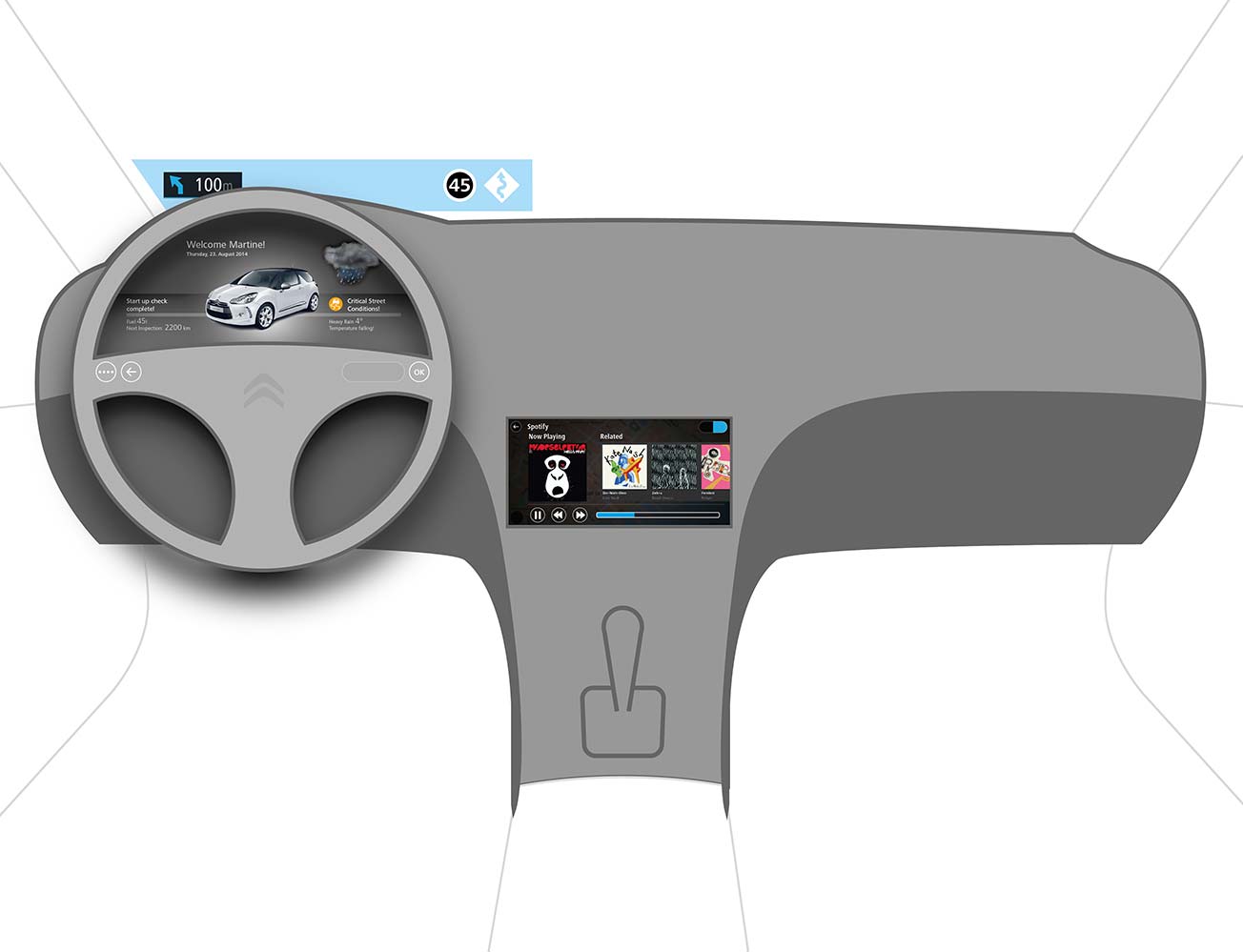Cars take us from A to B, from home to work, from everyday places to holidays. As such cars are transitional spaces, in-between places and moments. Therefore while driving we are also on the lookout for ways to make use of the transit time, be better informed, get things done, or just simply, be well entertained.
Today’s technologies enable the car to become a richer environment, one that potentially connects the different spheres of life on a more personal level. Products such as smart phones already deliver these possibilities, yet in the car these new kinds of functionalities are still often poorly integrated. Most times new features are retrofitted into existing interfaces which were originally designed for driving purposes only. With this, in-car user experiences are becoming increasingly complex, and new capabilities could pose potential safety risks.
For this project we utilised our user-centric approach, and explored people’s needs in different scenarios, like everyday situations or holidays, and during different phases of travelling: before the start, while driving, waiting at a traffic light, and arrival at the destination. Furthermore, we explored meaningful hardware interface set ups for drivers and passengers, which are ergonomic and would better accommodate the new functionality without sacrificing safety. Using our results we created a tangible concept vision which illustrated our perspective on the set up of in-car information displays, use of input paradigms, integration of other user devices and services, and presentation of content to drivers and passengers without creating cognitive overload using both visual and acoustic communication means.
This project was a collaboration with Cees van Dok, Head of User Experience Design at TomTom, while Nina Vöge was part of the TomTom User Experience Design Team.







